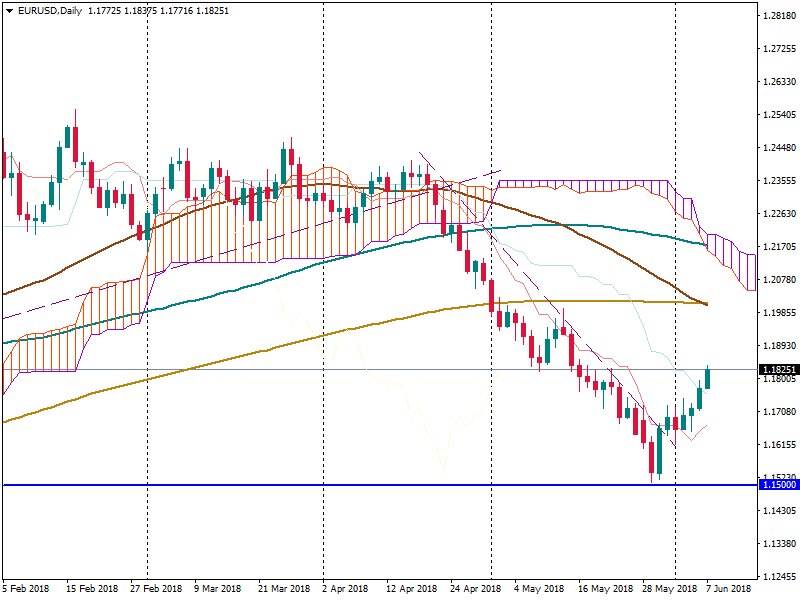Is the EUR able to continue the rise?
At the end of May, the EUR/USD pair plunged to lows of July 2017. However, the single currency managed to return its positions. EUR/USD is rising but there are doubts on the future strengthening of the euro. And there are several reasons for that. On the one hand, unclear Italian policy and the Brexit deal weight on the euro making it plunge. On the other hand, the European Central Bank is anticipated to taper its quantitative easing program. The ECB is going to debate whether to gradually unwind bond purchases. The Central Bank is anticipated to conclude with a public announcement on when they intend to cease asset purchases on June 14.

Let’s have a look at forecasts of the world leading financial banks and institutions.
UOB bank has changed its forecast on the EUR from a bearish to neutral. In the near-term, there are hints on some advance, however, it’s viewed as a part of a 1.1600-1.1830 consolidation range and not the start of a sustained move up.
Analysts at Scotiabank stay neutral/bullish in the near-term. According to the analysts, the near-term balance of risk appears to support the euro strength. As a result, in the near-term, the EUR is anticipated to gain the early May closing high around 1.1850. The support is anticipated to lie at 1.1720. In the medium-term, the analysts are concerned about implications of the crossing of the 50-day MA (1.2018) below the 200-day (1.2012), the “death cross”. So the fall may be anticipated.
The Danske Bank sees EUR/USD below 1.20 for longer. Before the bank saw the pair below 1.28 in the long-term, however, up to now, it predicts that EUR/USD will be stuck below 1.20 for an extended period. In the near-term, the bank expects the downward movement of the pair.
According to the SEB Research, EUR/USD will trade at 1.10 over a three-month horizon. The company thinks that continued Fed tightening this year and next will support the US dollar’s rise in coming quarters. As a result, a fact that the US interest rate will be higher and the European interest rate will remain unchanged will lead to a further support of the USD in the near-term. However, the SEB Research says that once the ECB and other central banks start to normalize policy, these forces together with USD negative rebalancing flows will exert renewed downward pressure on the US dollar.
Making a conclusion, we can say that the forecast for euro movement in the near-term is positive. However, in the medium-term, the euro may meet difficulties and fall to the May lows again.